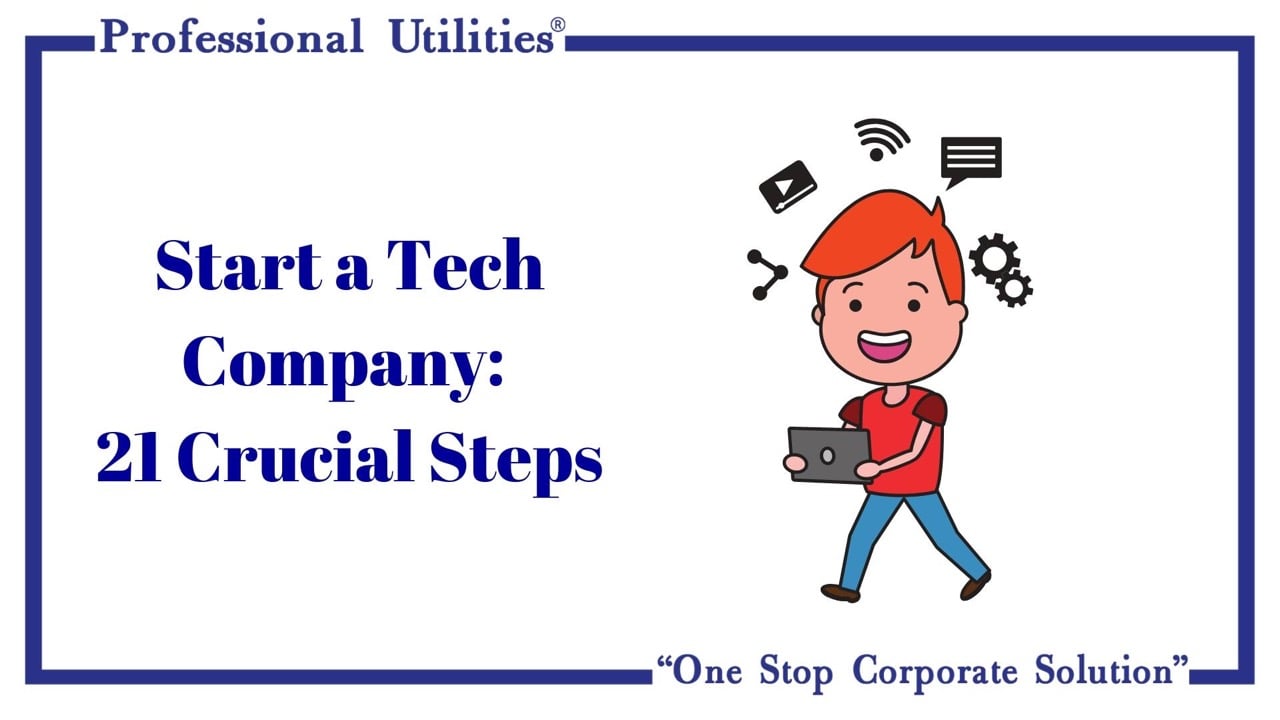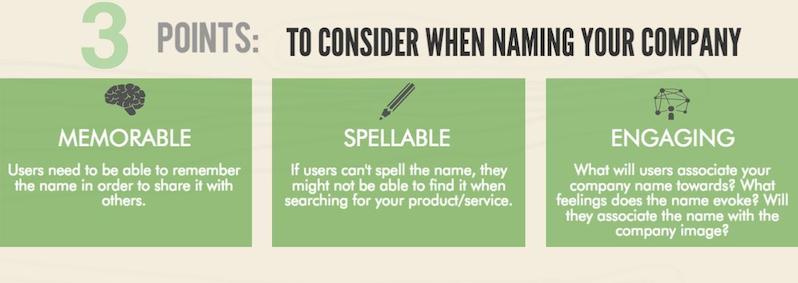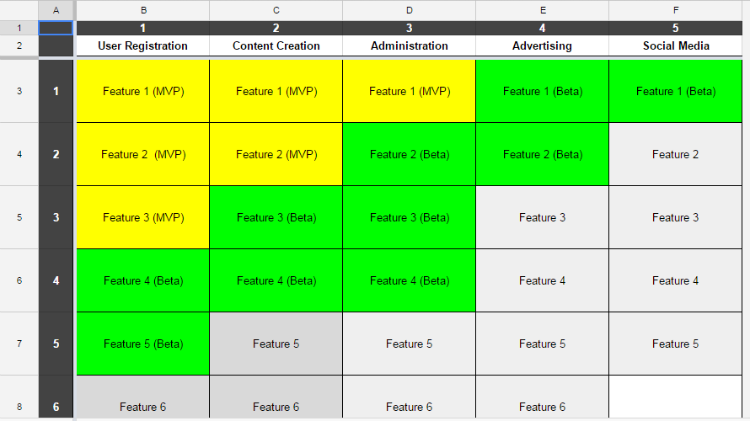
It’s easy to get caught up in the glamour of launching a successful startup with the possibility of it becoming the next Google or Facebook. However, because of the proliferation of overnight success stories, too many founders dive into entrepreneurship without a plan, limiting their chances of fortune and glory.
That is why we here at the Founder Institute have provided an in-depth guide to the tips and tricks of launching a startup, complete with expert advice and useful tips for every stage of your company.
Before You Launch Your Startup...
...You should consider your reasons for launching a company in the first place. And who better to give you crash course in the reality of becoming an entrepreneur than former Evernote CEO Phil Libin?
Come to a free startup event near you for even more startup advice!
Name Your Company and Get Your Domain
1. Pick a name for your company that is simple to spell and easy to remember. While sticking to as few syllables as possible can be challenging, putting restrictions on the length of your company’s name can force you to be creative.If possible, stick to two syllables. Take a look at the names of the following companies with short names:
- Foursquare
- DropBox

2. Having a matching domain name is inconsequential, so worry more about a name that emphasises what your company is and does, and less about how well it corresponds with the actual name of your company.
Mint.com is quality, it’s a place where money is made, it’s short and spelled unambiguously. It’s a very good brand name for what we’re doing. We spent three months, hundreds of hours, and more money than I care to comment on for that domain - but it was worth it. Offhand, who do you trust more: Mint.com or MoneyAnalyzr.com?” - Aaron Patzer (Founder, Mint.com)
Below are some resources to help you name your company and secure your domain:
- Startup Company Name Generator - Just enter your main keywords to quickly generate company names and check domain availability.
- GoDaddy.com - A domain registrar and web hosting company
- HostGator - A provider of shared, reseller, virtual private server, and dedicated web hosting.
- Google Domains - Register a domain, get hosting, and build a site.
Design Your Company’s Logo
3. Your logo, like your startup’s name, should be simple and memorable that resonates with your target audience while clearly representing what you have offer.
4. Unless you’re a designer, don’t create your startup’s logo by yourself. Treat your logo with respect and employ a designer to craft the ideal logo for your company. While you may have to spend some money for this, having a professional looking logo can separate you from the competition.
5. Be original! It's way too easy to become infatuated with the iconic logos of other companies, but keep in mind that your logo is what should help make you stand out from the crowd and not to blend in with the rest. Also, think about posterity; will your company's logo be remembered 5, 10, or 20 years from now?
Even though they’re often just small images, logos carry a whole lot of meaning –and designing one comes with a whole lot of responsibility. Logos are usually the most recognizable representation of a company or organization, and with more information available to the average consumer today, logos also have to quickly and effectively communicate on behalf of their brand.” - Dale Partridge (Founder, StartupCamp.com)
If you need help creating imagery for your startup, here are some resources to get you started:
- 99Designs - A marketplace for graphic design, including logo design, web design, and other design tasks.
- Fiverr - A marketplace for creative and professional services, on budget and on time.
- Canva - Canva makes design simple for everyone. Perfect for beginning designers.
Launch Your Site or Landing Page
6. Your startup’s landing page should include your logo and a description that perfectly and clearly demonstrates what your offering is and what it does.
7. Your landing page is also the ideal place to collect the email addresses of your potential users and to keep them updated and increase customer retention.
8. Remember, it's perfectly acceptable to launch your landing page before your product is built, as long as you're upfront about the status of your product. However, be sure to include as much information about what you have to offer to increase customer anticipation for when you do release your product.
My pre-launch page allowed me to develop my 'sales pitch' - the value proposition of my book. It helped me refine my ideas as well as pinpoint ways to make it connect with my intended audience better." - Brian Casel (Founder, Audience Ops)
For more information on launching your website or landing page, check out the following resources:
- Weebly - A web-hosting service featuring a drag-and-drop website builder.
- Unbounce - Unbounce lets marketers build, publish and test landing pages without IT or software.
Create Your Company Blog
9. Your company blog should focus less on your offering and more on providing your audience with useful and insightful information and will generate more organic traffic towards your site.
10. Be sure to optimise your blog for conversions and make it easy for your audience to sign up for more content or invest in your offering. All other features are just distractions.
11. The blog for your company should not only consist of informational blog posts, but a variety of media, including infographics, images, videos, podcasts, presentations, and more. This, combined with a variety of relevant topics, will help you further establish trust with your audience.
To help you pick the best blogging platform for you, below is a blog platform comparison chart, provided by Matt Banner from his blog post, Best Blogging Platform Options to Use:

Content is the easiest way to engage with new people online and it’s the backbone of my traffic strategy. The main thing here is to work out who your audience is and create some useful content for them." - Dan Norris (Cofounder, WP Curve)
Here is a list of resources to help you get your company's blog up and running:
- Wordpress - Build a website or blog with hundreds of free, customizable, mobile-ready designs and themes.
- Squarespace - An easy way to create an exceptional website, complete with pages, galleries, blogs, e-commerce, domains, hosting, and more.
- Text Pattern - A flexible, elegant, and easy-to-use content Mmanagement system.
Survey Your Customers
12. One of the most effective ways to determine what your customers want is to employ surveys. Remember, keep surveys short (5-10 questions) and only include questions that will generate the most useful answers.
13. Reach out directly to your customers to get valuable feedback. While interviewing your customers through email, over the phone, or, even better, in person, can be time consuming, it can also produce the most useful insights on how well your customers like your product.
14. Conduct usability tests to get an in-depth view of how typical users interact with your product and/or site as this will inform you where exactly your users get lost, which features are most useful, etc. While there numerous paid usability services, the do-it-yourself version is to bring in a test user (with a promise of free lunch, perhaps?) and simply watch them interact with your offering.
Customer feedback helps us understand the WHY behind what people are doing. Why are people using one feature three times as often as another? Why do most of your customers stop creating accounts on the last step? Or what causes customers to use your product less frequently?" - Lars Lofgren (Director of Growth, I Will Teach You To Be Rich)
Below are some tools to help you survey your potential customers and get the most reliable feedback:
- SurveyMonkey - Enables anyone to create professional online surveys quickly and easily.
- Key Survey - An enterprise level survey application that enables users to collect, manage and leverage feedback within their customer base.
- SurveyGizmo - An easy to use survey software tool that allows you to easily create online surveys, quizzes, polls, and web forms.
Map Your Product’s Features
15. Construct a product roadmap using the following method:
- On sticky notes, write down a series of features that you want your potential offering to have.
- Organize the features into logical groups, which may be in categories such as “Registration” or “Search.”
- On a wall or other flat, empty space, organize the sticky notes by placing the important features on top of less important features vertically within the group, and placing the more important group to the right of the less important groups.
- Batch items from top to bottom and from left to right into named releases, such as "MVP, "Beta", "Test", or "Version 1."
*For a more detailed version of this process, below is a Product Development Roadmap to get you started:

The map shows us the big picture of our product and allows us to modify our mindset. We are focused now on the overall vision and purpose behind the product and not solely on particular features we need to deliver. Then it is easier for us to answer the question: 'why are we building it?', which is probably the most important question one can ask while creating products.
Create Wireframes and Mockups of Your Website
16. Provide detailed explanations and annotations for every aspect of your wireframe, especially if you are working with designers. Dummy boxes should also be filled with text, even if it’s only placeholder text, as this will give you an idea of how much text should actually exist on your site.
17. Don’t shy away from coding earlier in the process if possible, as building a structure in HTML and then moving to CSS for the basic layout can streamline the entire development process.
18. Create your website wireframes and mockups in high-fidelity to better replicate the look, feel, and functionality you're stiving for.
Creating a solid wireframe as the core document you give to your designer to work from is one of the best ways to move forward and turn your entrepreneurial idea into a money-making reality." - Chelsea Baldwin (Editor in Chief, Broke Girl Gets Rich)
If you need help bringing your vision to life, here are some wireframe and mockup tools that can get you started:
- Gliffy - Create professional-quality flowcharts, wireframes, UML diagrams, and more.
- Lovely Charts - This free tool is built to create prototypes fast and nothing else.
- NinjaMock - Everything from mobile app design to website design is possible with this free online web application.
- Mockflow - A simple website wireframe tool which lets you create blueprints, mockups of websites like drupal, WordPress, mockup app wireframes, and more in minutes.
Launch Your Company
19. Worry more about functionality and less about the appearance of your site. It's important to launch your site and product, even if they are still in an unrefined state, as you need to start generating interest in your offering and keep potential users updated about the status of your company.
20. Collect feedback, analyze data, and refine your offering. This is an ongoing process, so the sooner you start improving your offering the better.
21. And finally, as you launch your company, keep these words in mind:
It's fine to celebrate success but it is more important to heed the lessons of failure." - Bill Gates

Why Professional Utilities?
At Professional Utilities, we leverage our industry knowledge and expertise to help businesses navigate complex regulations, minimize risks, and optimize operations for maximum efficiency and profitability.

One Stop Corporate Solution

PAN India
Services

Free Expert
Assistance

Google Verified
Business

Dedicated Support
Staff


.svg)







